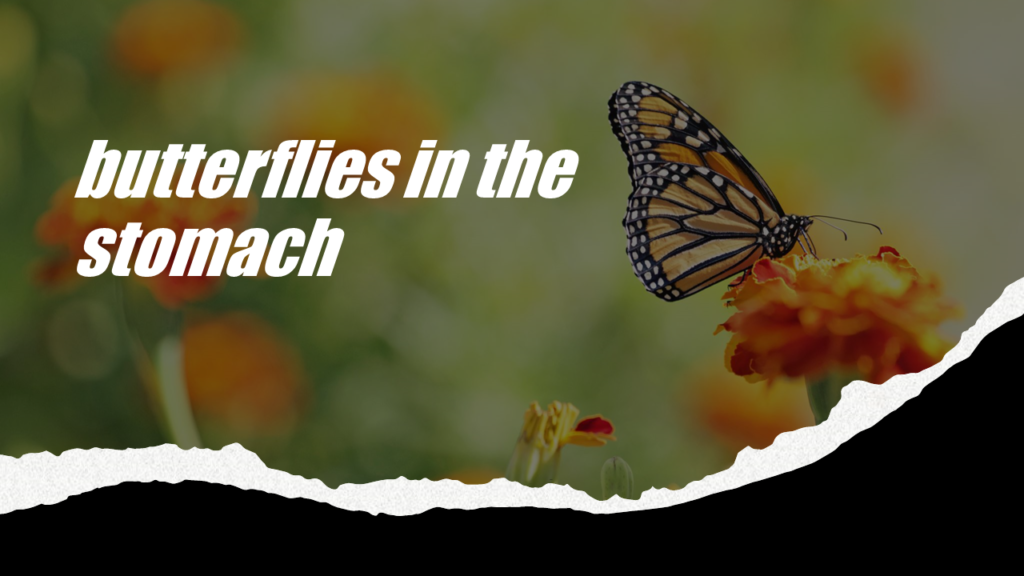It is commonly assumed that love is evidently inside their body, soul, and mind. The questions remain, however: “Where do you feel and sense your love in your body?”
Love is Not Only Butterflies in the Stomach
Many people may think about butterflies in the stomach or heart.

When we are falling in love, we frequently experience such a swoony sensation in our stomach as “butterflies.” A metaphor of “a belly full of glittering monarchs and swallowtails” when our beloved one appears is quite illustrative. This feeling is both a physical and psychological phenomenon that signals our sexual passion and lust. Getting excited or anxious activates the gut and causes the fluttering feeling in our stomach because our brain activates the vagus nerve connected to our gut.
(see more in Why falling in love gives you butterflies, by Nicole Spector, Feb. 14, 2018, at https://www.nbcnews.com/better/health/why-falling-love-gives-you-butterflies-ncna847951)
Love, like any emotion, can be a fleeting subjective experience with a certain pattern (or patterns) of feelings, body sensations, and physiological processes. Among those are: a warm rush or feeling hot, a racing heart, fast breathing, blushing, a flushed face, sweating, and butterflies in the stomach.
Body organs, especially vital ones like the heart and head, are frequently used in a variety of metaphorical and metonymic expressions of love. According to their cultural beliefs, people tend to attribute emotional and cognitive processes to certain organs of the body.
Do You Love with Your Heart or with Your Head?

The head and heart, as vital body organs, are often used in metaphorical expressions referring to mental life. In many Western cultures, the head is the place where reason and rational thought are located, while the heart is the place where feelings and emotions are located (see, for example, Karandashev, 2019).
The heart as the locus of emotional experience is commonly opposed to the head as the locus for rational thinking. This is called a dualistic view of mental life.
The “heart is a container of emotions” (Kövecses, 2003) is one of the most common metaphors for love. Sincere love is often attached to the heart, as in the saying “follow your heart.”
Many languages include a heart metaphor for love and associated emotions. The Spanish expression “hablar con el corazon en la mano,” as well as the Italian “parlare col cuore in mano,” means “speak with the heart in your hand” – that implies “speak frankly.”
These expressions are rooted in an old cultural metaphor that shows sincere feelings figuratively means “taking the heart out of one’s breast and showing it on one’s hand, where it is easily seen.” This saying is remotely associated with the old English expression “to wear one’s heart on one’s sleeve,” which, in turn, stems from the chivalry tradition of the Middle Ages (Pérez, 2008). The expression is still used today with the idea of plainly expressing one’s emotions. In a similar vein, the heart commonly represents love.
A Dualistic View of Love
Psycholinguistic studies of metaphorical and metonymic expressions in the emotional lexicons of English, Japanese, and Thai have found two different ways of thinking about the mind that are based on culture: “dualistic” and “monistic” (Berendt & Tanita, 2011; Karandashev, 2019).
As I noted above, in many Western cultures, the heart is the seat of feelings, emotions, and attitudes, while the head is the seat of cognitions and thoughts. When we are guided by our heart, we are guided by our emotions. When we are guided by our “head”, we are guided by our rational thought. This conceptualization admits a dualistic view of mental life functioning in either rational or emotional modes, guided by either the “head” (mind) or the “heart” (emotions). This dichotomy in Western cultures sets up a psychological dilemma: either “follow your mind” or “follow your heart.” In several Western models of emotion, love comes from the heart. The expression “listen to your heart” conveys self-expressive, individualistic cultural values. Practical reasons, however, still have their values. Therefore, many young men and women had a difficult choice in their lives: to “follow their heart” or “follow their rational thought,” as it is depicted in many novels in the history of literature.
A Monistic View of Love
Different from this dualistic perspective, some Eastern cultures perceive mental life from a monistic perspective. They do not oppose but rather integrate the rational and emotional modes of life. For example, the Japanese and Thai cultural views represent internal personal experience as a mixture of its different modes. Rational and emotional functions are not divided. These traditional cultural views are reflected in the conceptual metaphors of the Thai jai (heart) expressions and the Japanese hara (abdomen/belly) expressions. The Japanese metaphors, however, embody mental life in several sources: kokoro, mune, and hara (see more below).
You may also be interested in the articles:
Body metaphors of emotions across cultures
Love-as-fire across European and North American cultures
References:
